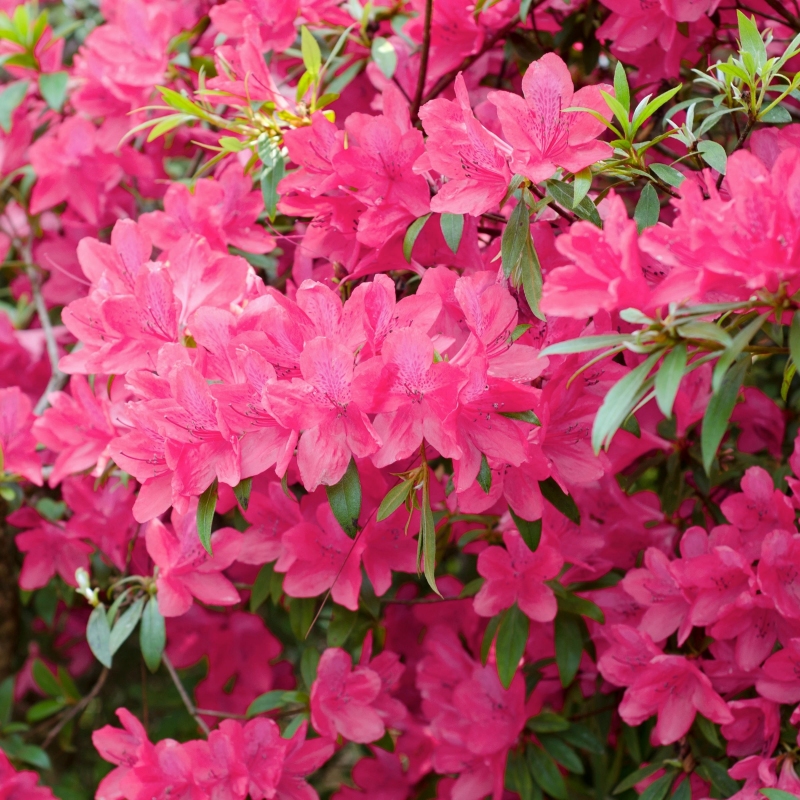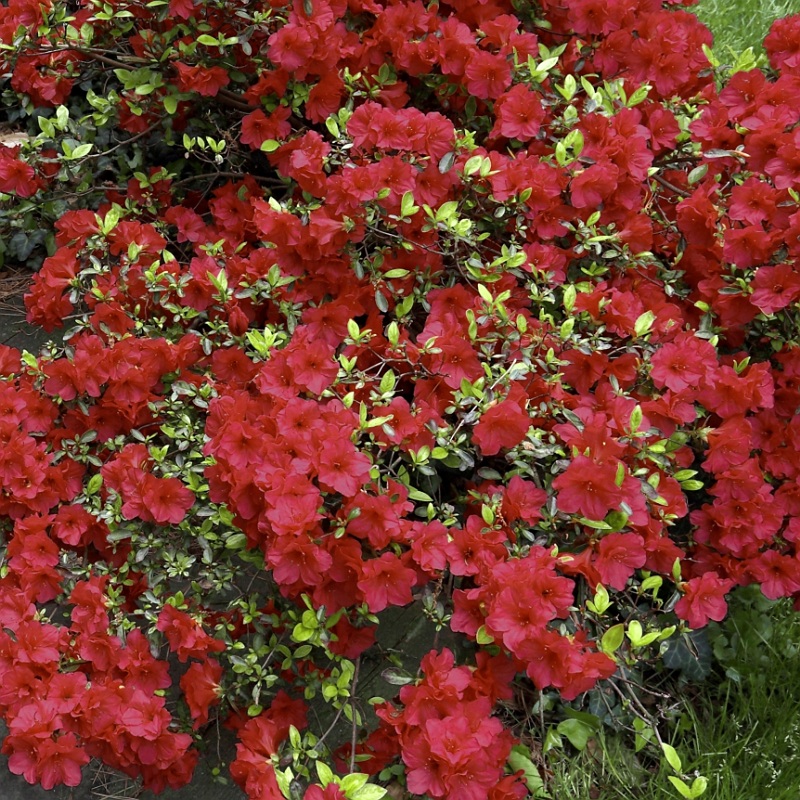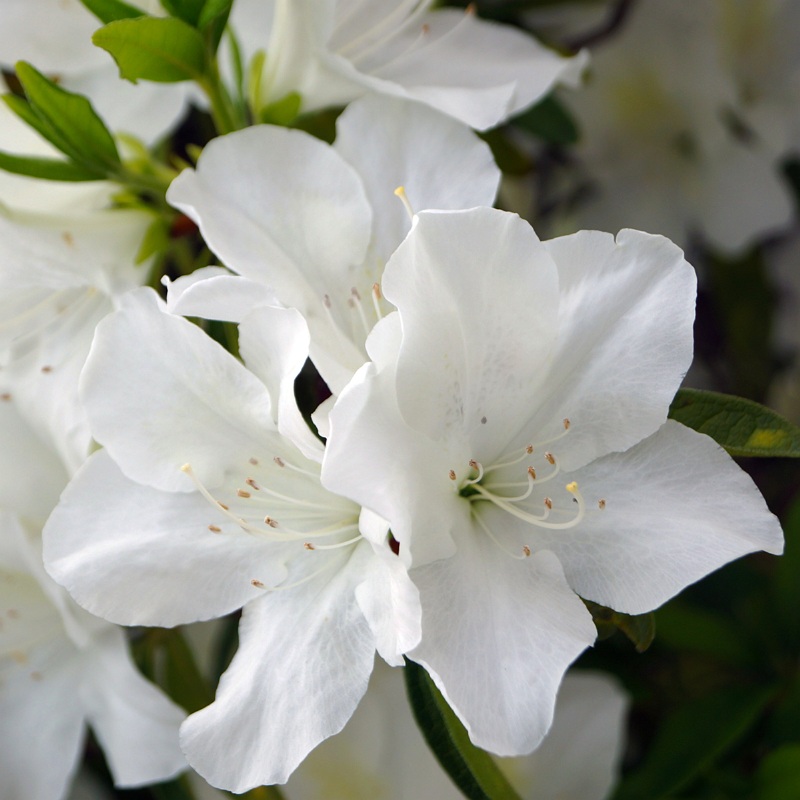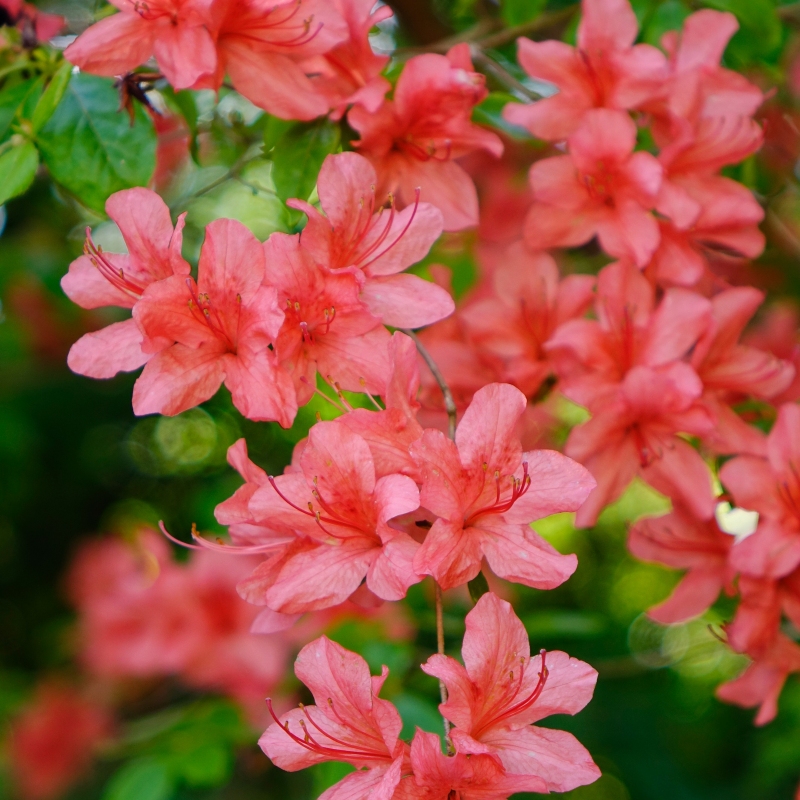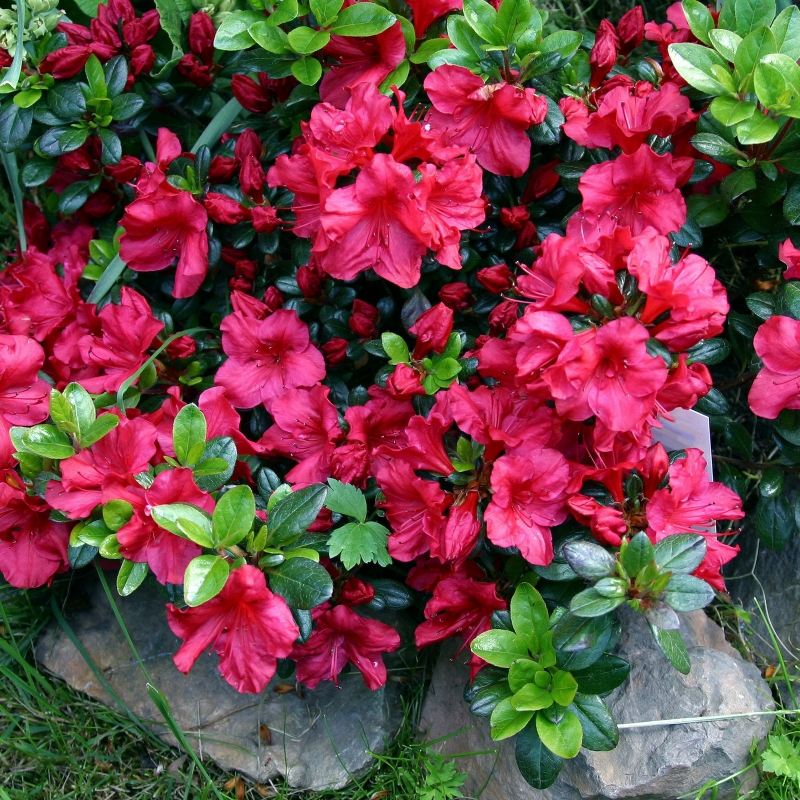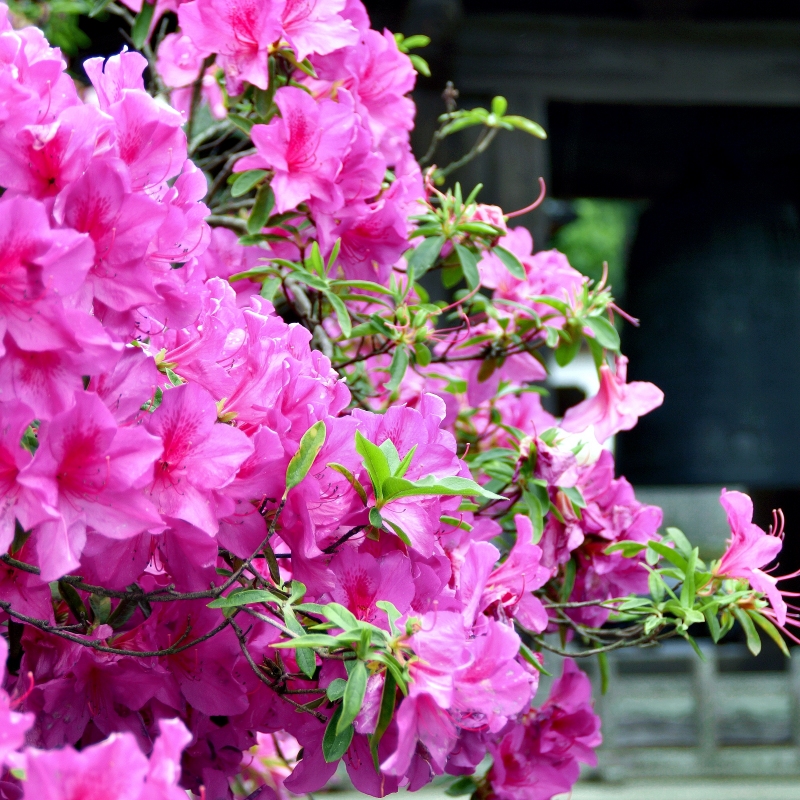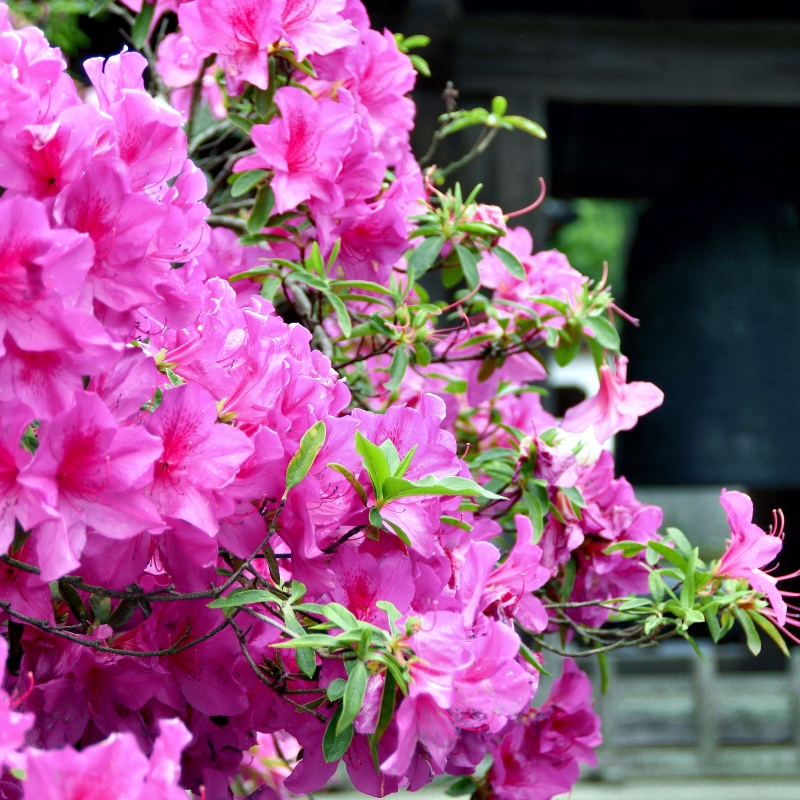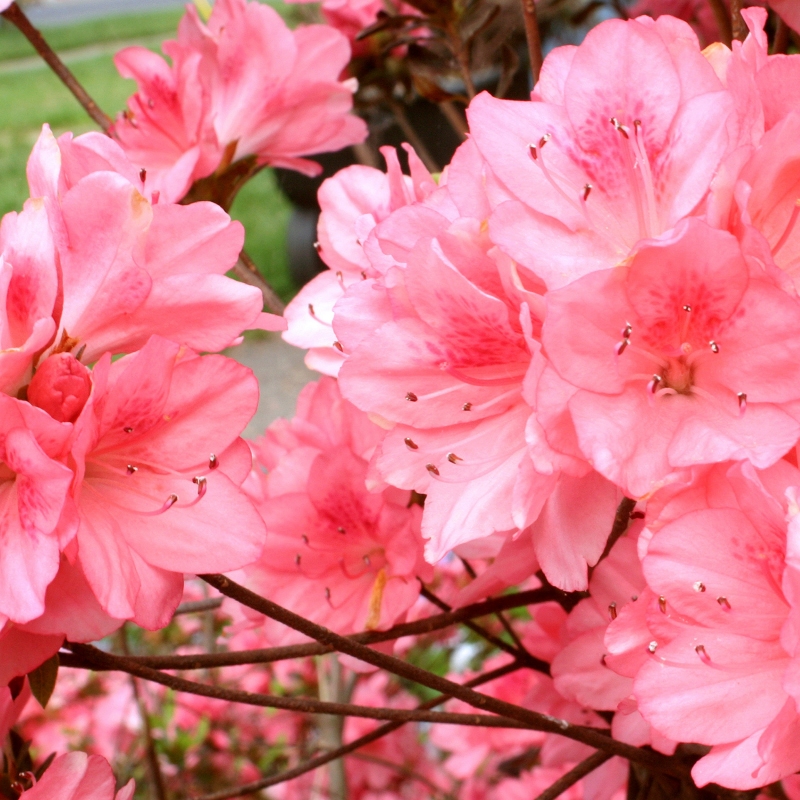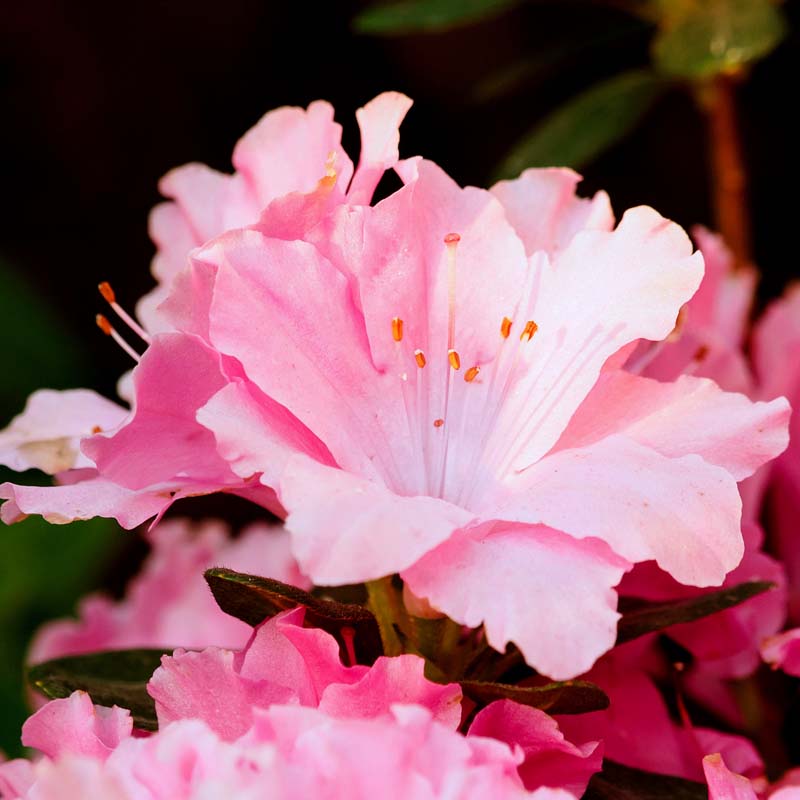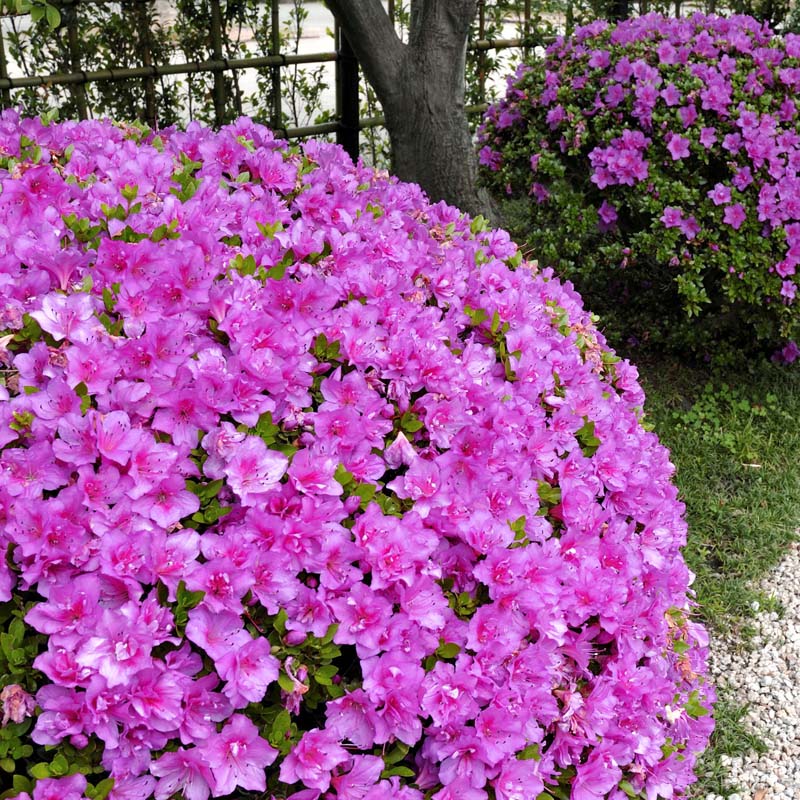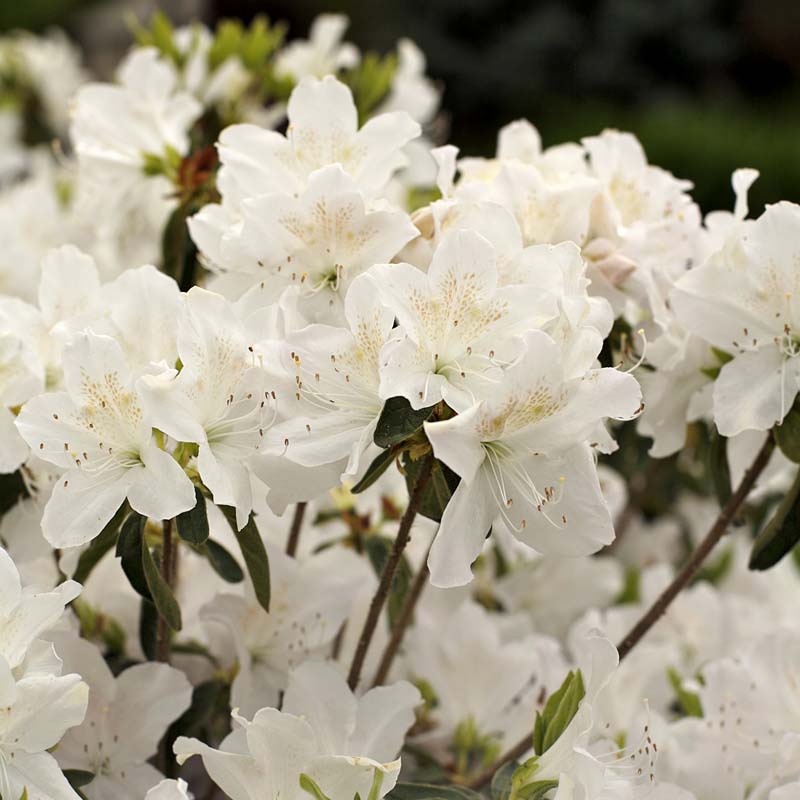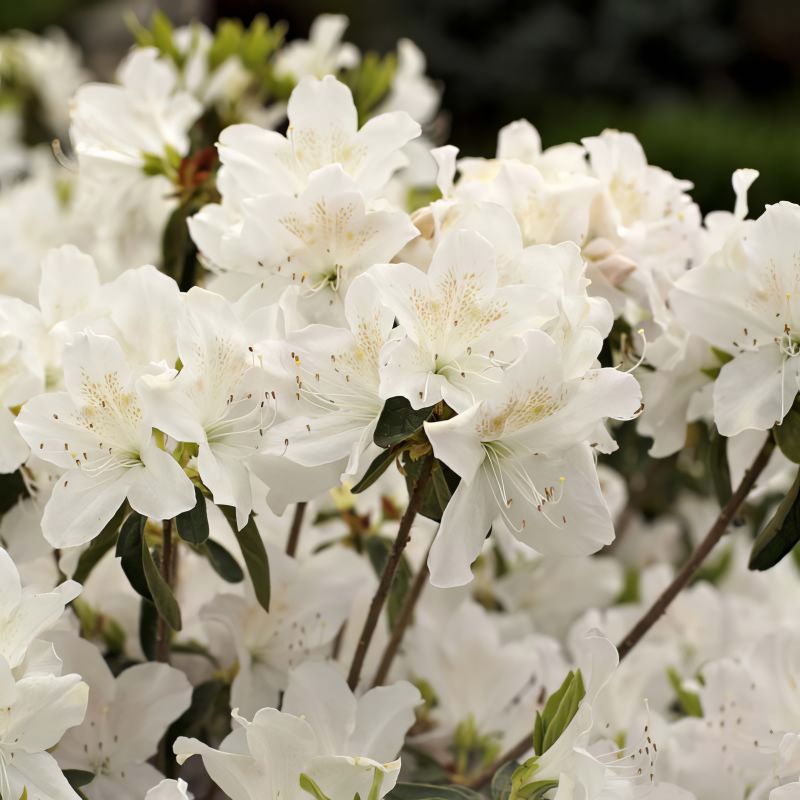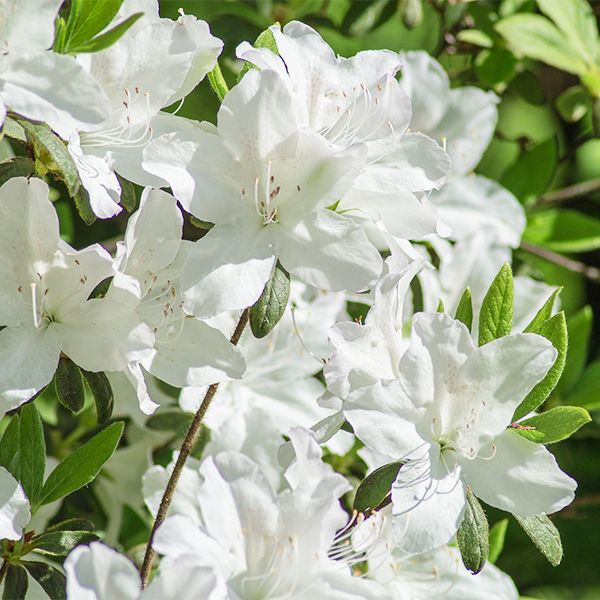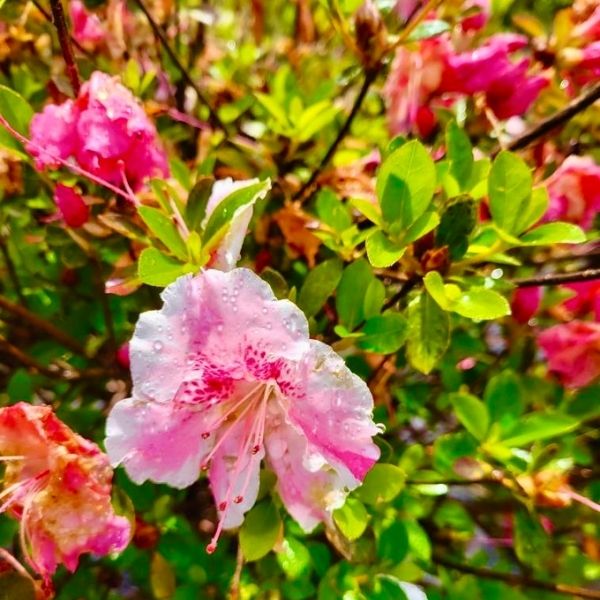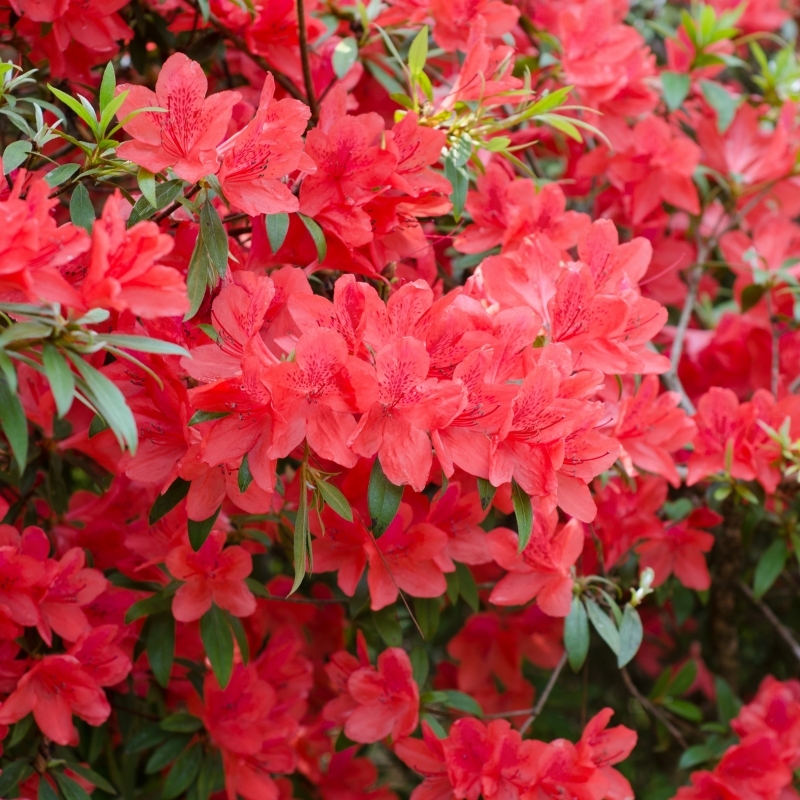

Gibraltar Azalea
Rhododendron 'Gibraltar'
17 reviews
Gibraltar Azalea
Rhododendron 'Gibraltar'
17 reviews
2.5 Gallon
We are sorry, product is currently out of stock due to seasonal availability. Please check the "Related plants available in your area" section below
Not just beautiful - intentionally selected by ShrubHub's 3D landscape design team to fit real-world spaces and maximize yard potential.
Why Gibraltar Azalea?
Gibraltar Azalea (Rhododendron 'Gibraltar') is a stunning flowering shrub known for its bold orange-red blooms. Growing up to 6 feet tall, it adds a vibrant pop of color to any garden or landscape. With its compact form and glossy green foliage, it is a popular choice for borders, hedges, or as a standalone specimen plant. The Gibraltar Azalea is also cherished for its ability to attract pollinators like bees and butterflies.
Related plants available in your area
Sunlight
Gibraltar Azalea requires full or partial sunlight. It prefers a location with morning sun and afternoon shade or filtered light. Direct afternoon sun exposure should be avoided as it can cause the plant to lose its vibrant color.
Watering
Gibraltar Azaleas have moderate watering requirements. They prefer moist soil, but not waterlogged conditions. It is important to provide regular watering, especially during dry periods, to keep the soil consistently moist but not overly saturated.
Fertilizing
Gibraltar Azaleas require acid-forming fertilizers with a balanced ratio of nitrogen, phosphorus, and potassium. Additionally, they benefit from fertilizers specifically formulated for azaleas and rhododendrons, which contain micronutrients and are low in
Plant Information:
| Botanical Name: | Rhododendron 'Gibraltar' |
| USDA Zones: | 5 - 8 |
| Water: | Moderate |
| Exposure: | Full Sun |
| Soil Needs: | Well Drained |
| Mature Height: | 4 - 5 feet |
| Mature Spread: | 4 - 5 feet |





Pollination Info
Gibraltar Azalea (Rhododendron 'Gibraltar')
The Gibraltar Azalea, also known as Rhododendron 'Gibraltar', is a stunning flowering shrub belonging to the Rhododendron genus. It is a hybrid variety that produces large, trumpet-shaped blooms in vibrant shades of orange and red. This azalea is highly popular among gardeners for its colorful and eye-catching display.
Pollination
The Gibraltar Azalea is an insect-pollinated plant, relying on bees and other pollinators to transfer pollen between flowers. The process of pollination is crucial for the plants to produce seeds and eventually new plants.
Pollination Mechanism
When the Gibraltar Azalea is in bloom, it displays its attractive flowers that contain both male and female reproductive organs. The male parts, known as stamens, produce pollen, while the female part, called the pistil, possesses the stigma, style, and ovary. The pollen needs to be transferred from the stamens to the stigma for successful pollination.
Pollinator Attraction
The Gibraltar Azalea attracts various pollinators, mainly bees, butterflies, and hummingbirds, with its vibrant and fragrant flowers. The bright orange and red colors serve as visual signals to guide the pollinators towards the nectar-rich blooms. The sweet scent emitted by the flowers acts as an olfactory lure for the pollinators, attracting them to the plant.
Pollen Transfer
When a pollinator visits a Gibraltar Azalea flower, it brushes against the stamens, acquiring pollen grains on its body. As the pollinator moves to another flower, the pollen grains may accidentally brush against the sticky stigma of the new flower. Alternatively, the pollinator may intentionally deposit the pollen by rubbing against the stigma while seeking nectar. This pollen transfer process is known as cross-pollination.
Seed Production
If successful pollination occurs, the pollen grains that have landed on the stigma will germinate and grow pollen tubes. These tubes will penetrate the style of the flower, reaching the ovary where fertilization takes place. The fertilized ovules develop into seeds within the ovary. As the seeds mature, the ovary swells and eventually forms a seed pod or capsule.
Dispersal
Once the seed capsules of the Gibraltar Azalea ripen, they split open, releasing the seeds inside. These seeds are generally small and lightweight, equipped with structures like wings or hairs that aid in dispersal by wind. They can be carried over some distance before finding suitable conditions to germinate.
Overall, the Gibraltar Azalea relies on the assistance of pollinators to successfully reproduce and produce viable seeds. The mutually beneficial relationship between the plant and its pollinators ensures the health and propagation of this beautiful flowering shrub.
FAQ
Frequently Asked Questions about Gibraltar Azalea (Rhododendron 'Gibraltar')
1. What is a Gibraltar Azalea?
Gibraltar Azalea, scientifically known as Rhododendron 'Gibraltar', is a deciduous shrub renowned for its vibrant orange flowers. It belongs to the Rhododendron genus and is a popular cultivar among garden enthusiasts.
2. How tall and wide does the Gibraltar Azalea grow?
On average, the Gibraltar Azalea can grow up to 6 feet in height and spread to a width of 6 feet as well. However, this can vary depending on the specific growing conditions and pruning practices.
3. When does the Gibraltar Azalea bloom?
The Gibraltar Azalea typically blooms in late spring to early summer. During this time, it displays large clusters of vivid orange flowers, creating a stunning ornamental display.
4. What are the ideal growing conditions for the Gibraltar Azalea?
The Gibraltar Azalea thrives in moist, well-drained soil that has a slightly acidic to neutral pH level. It prefers partial shade or filtered sunlight, as excessive exposure to direct sunlight can lead to leaf scorching.
5. How often should I water my Gibraltar Azalea?
It is crucial to keep the soil consistently moist, but not waterlogged, during the growing season. Water your Gibraltar Azalea regularly, especially during dry periods. Mulching the soil can help retain moisture and regulate temperature.
6. Does the Gibraltar Azalea require pruning?
Pruning is essential for maintaining the shape and health of your Gibraltar Azalea. It is recommended to prune it after flowering, removing any dead or damaged branches. Also, thinning out crowded growth can improve air circulation.
7. Are there any pests or diseases that affect the Gibraltar Azalea?
Gibraltar Azaleas can be susceptible to common azalea pests such as lace bugs, spider mites, and azalea caterpillars. Diseases like powdery mildew, root rot, and leaf spot can also occur. Regular monitoring, proper watering, and providing good air circulation can help prevent and manage these issues.
8. Can I grow Gibraltar Azalea in containers?
Yes, Gibraltar Azaleas can be grown in containers. Ensure the container has good drainage holes and use a well-draining acidic soil mix. Adequate watering and providing appropriate sunlight are crucial factors to consider when growing them in containers.
9. How do I propagate Gibraltar Azalea?
Gibraltar Azaleas can be propagated through various methods such as stem cuttings, layering, or grafting. Stem cuttings taken during the summer months tend to have a high success rate. Proper care and suitable rooting conditions are necessary for successful propagation.
10. Can Gibraltar Azalea tolerate cold winters?
Gibraltar Azalea is generally hardy in USDA zones 6-9. However, it can tolerate occasional cold snaps and light frosts. Providing mulch around the base of the plant during winter can offer some protection.
Planting & Care
Gibraltar Azalea (Rhododendron 'Gibraltar')
Planting
- Choose a planting location with well-draining soil and partial shade.
- Dig a hole that is two times as wide and just as deep as the container.
- Amend the soil with organic matter, such as compost or peat moss, to improve drainage and fertility.
- Carefully remove the azalea from its container and gently loosen the roots.
- Place the plant in the hole, ensuring the top of the root ball is level with or slightly above the soil surface.
- Backfill the hole with soil, firming it gently around the roots.
- Water the newly planted azalea thoroughly to settle the soil.
Care
- Watering: Keep the soil consistently moist, but not waterlogged. Avoid allowing the soil to dry out completely.
- Fertilizing: Feed with a slow-release, acid-loving fertilizer in early spring before new growth begins.
- Pruning: Prune immediately after flowering to shape the plant and remove dead or damaged branches. Avoid heavy pruning, as it can reduce blooming.
- Mulching: Apply a layer of organic mulch, such as pine needles or wood chips, around the base of the plant to conserve moisture, suppress weeds, and regulate soil temperature.
- Protection: Provide protection from strong winds and extreme temperatures, as Gibraltar Azaleas are not cold hardy.
- Pest and Disease Control: Monitor for common azalea pests such as lacebugs and treat accordingly. Keep an eye out for leaf spot diseases and promptly remove infected leaves.
- Winter Care: In colder climates, apply a thick layer of mulch around the base of the plant to protect the roots from freezing temperatures.
Check Out These Verified Customer Reviews:
Customer Reviews
4.6 out of 5 based on 17 reviews
Thank you! Your review has been submitted.
Customer service was excellent - they answered all my questions promptly.
The website was easy to navigate and ordering was a breeze.
Fast shipping and well-packaged. Thank you!
Item has been added to your cart.



